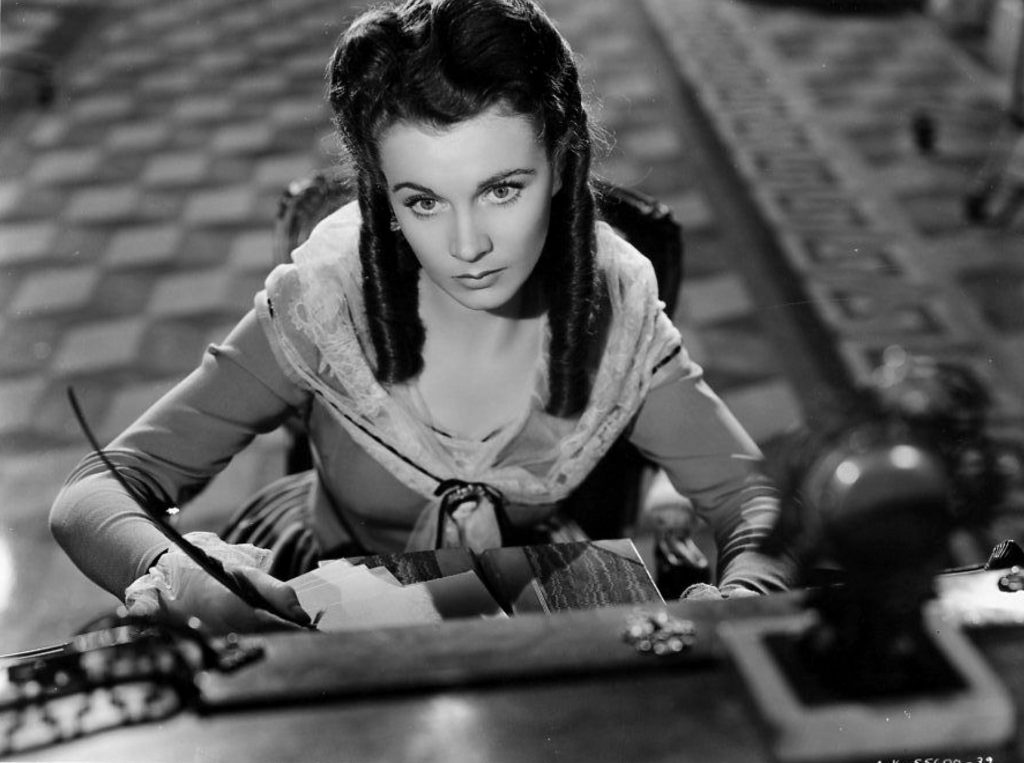
Winston Churchill’s favorite film was That Hamilton Woman (1941). Directed by Alexander Korda, the film exhibits all of the Romantic militarism and blind nationalism one would expect from a film made during WWII that was too prestigious a project to be burdened with a more blatant and direct form of propaganda. All of that aside, the film represents a trend in period dramas. This narrative trend, originating in the epistolary novels of the early 18th century, focuses primarily on a female protagonist who is strong willed and hungry for independence but who finds herself restricted by the patriarchal societies of the day, and is forced to find her validation covertly. This is the principle narrative arc of That Hamilton Woman, whose protagonist, Lady Hamilton (Vivien Leigh), is a social climber who parleys her acquired position (achieved through marriage) into a position of political influence, that she in turn abandons to begin an adulterous affair with Horatio Nelson (Laurence Olivier), that results in her falling in rank right back to where she started.
Korda’s film does not take this narrative in the direction of “cautionary tale”, choosing instead to celebrate Lady Hamilton’s unabashed flaunting of convention in the name of true romance. In this, one can find a sensibility that would later be dubbed proto-feminist by film scholars in the seventies, whose concerns were with how male filmmakers conducted their telling of cinematic stories with a female protagonist. Though Korda’s motives certainly do not reflect the political motives of feminism, but rather a romantic approach to British history essential to the morale of his country during wartime. Nonetheless, Korda does prove that a film with a “proto-feminist” sensibility has a mass-market appeal, and is capable of drawing audiences from a wide range of demographics. A similar film, though not nearly as refined or nuanced as That Hamilton Woman, is Sam Fuller’s Forty Guns. What films like these represent is that women, while at home during the war or left to administrate domestic affairs after the war, were becoming a powerful demographic unto themselves.
The social ramifications indicated by That Hamilton Woman’s success would come to full bloom in the sixties when the Hollywood studio system crumbled and feminism became a fully realized political movement. The films of this era by Agnes Varda, Barbara Loden, Chantal Ackerman, Vera Chytilova, Lina Wertmuller, and Elaine May created a cinematic codification that was easily recognizable to audiences as feminist. The most obvious difference between, let’s say, That Hamilton Woman and Barbara Loden’s Wanda (1970) is the absence of the masculine gaze. This will become of tremendous importance, as the mainstream moves to adopt the feminist demographic as it’s own. In doing so, the major Hollywood conglomerates will create an aesthetic of pseudo-feminism that reverts to the visual dialect of Korda’s That Hamilton Woman, where the masculine gaze will be prevalent and the narrative structure will at the least be designed in some way to shame women for their feminist ideologies.
